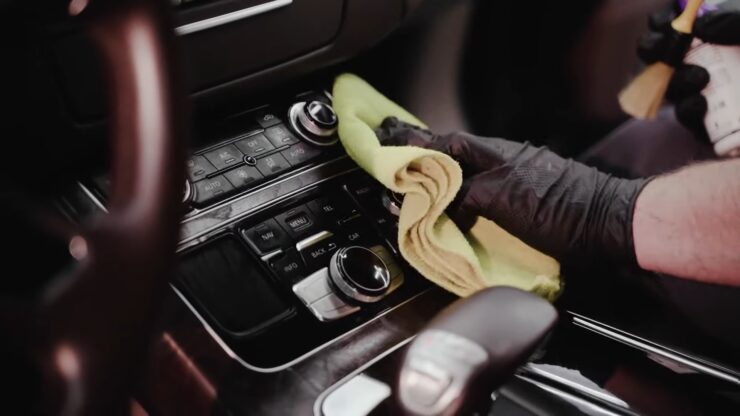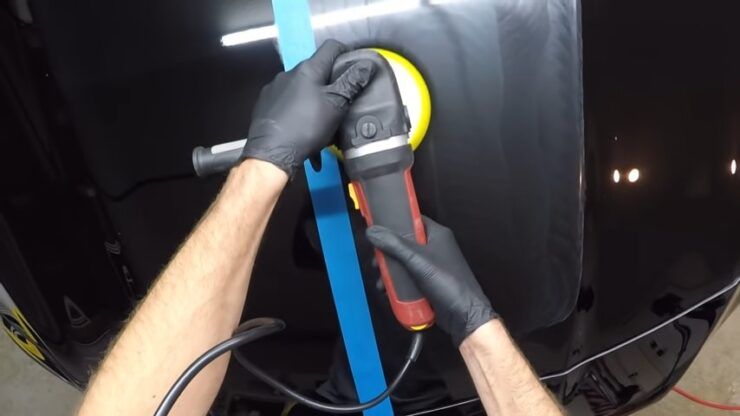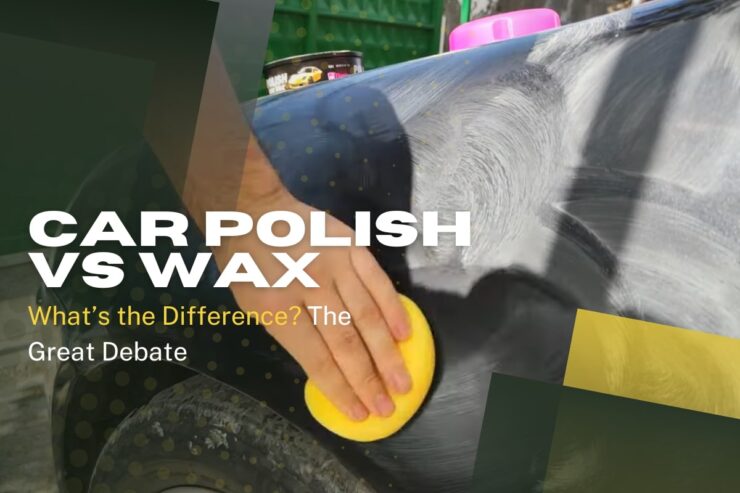From washing to buffing, applying wax to achieving a brilliant shine, each car care product is crafted to address a specific problem, ensuring your vehicle looks its best. However, when it comes to sprucing up or enhancing your car’s appearance at home, selecting the appropriate products to return your car to a near-pristine state can become slightly more complex. This is particularly true when trying to discern the differences between car polish and car wax and determining the right time to use each. It’s quite common to mistake one for the other, so we’ve simplified things for you.
In terms of car polish and car wax, it is essential to recognize that one is an abrasive substance while the other is a filler. Contrary to the belief that they can be used interchangeably, these products actually fulfill distinct purposes. Car wax, polish, and other finishing treatments must be used independently to guarantee the optimal outcome for your vehicle.
When a vehicle’s paintwork exhibits signs of dimpling, dullness, or even oxidation (where the lacquer appears to fade and become uneven in spots – typically noticeable in older, often red, cars), users frequently turn to car polishes containing chemical cleaners that help to smooth and level the vehicle’s paint surface, often eliminating minor surface scratches. Car polish, available in various levels of abrasiveness, is primarily intended to correct imperfections rather than provide protection.
Conversely, car wax is generally designed to enhance and protect a previously polished car surface by filling in any imperfections in the car’s exterior, creating a smoother, more uniformly reflective finish. As car wax is non-abrasive, it often complements car polishing, working together to maintain the long-term quality finish of your vehicle’s exterior.

Difference
Understanding the differences between car polish and car wax is crucial for proper car paintwork maintenance.
Here are the key distinctions between the two products:
Purpose
- Car Polish: The primary function of car polish is to correct paintwork imperfections such as fine scratches, swirl marks, and oxidation. It smooths the paint surface, improving its appearance and creating a more reflective, glossy finish.
- Car Wax: Car wax is designed to protect and enhance the paintwork after polishing. It fills in any remaining minor imperfections, providing a smoother, more reflective surface. Wax also adds a protective barrier to the paint, safeguarding it from environmental elements like UV rays, dirt, and water.
Composition
- Car Polish: Car polish is an abrasive product, often containing diminishing abrasives that break down as they are worked into the paint. This allows for controlled removal of fine layers of paint, helping to level the surface and eliminate imperfections.
- Car Wax: Car wax is a non-abrasive product, typically made from a blend of natural waxes (such as Carnauba wax), synthetic waxes, and other solvents. It provides a protective layer that adheres to the paintwork, enhancing the shine and depth of the paint.
Application
- Car Polish: Polishing should be done sparingly, only when paintwork imperfections are visible. Excessive polishing can wear down the paint’s protective clear coat. Car polish can be applied by hand or with an orbital buffer, using small, circular motions until the polish disappears and the desired finish is achieved.
- Car Wax: Waxing can be done more frequently to maintain the paintwork’s protection and appearance. To apply car wax, spread it over sections of the paintwork using a soft cloth, let it sit for a few minutes, and then remove it, typically with a microfibre cloth, to reveal a shiny finish.
How Do Car Wax and Car Polish Work on Cars?

Most car waxes are a blend of natural waxes and other solvents used to refine the appearance of your car’s paint by filling in any minor paintwork imperfections. Although many natural waxes possess characteristics that make them ideal for use as car waxes, the most commonly used car wax is derived from natural Carnauba Wax – a wax extracted from the leaves of palm trees native to South America.
In contrast, car polish is an abrasive substance designed to remove very fine layers from the top layer of your protective paintwork, resulting in a smoother, even surface that reflects light and produces a highly polished, shiny effect. Many car polishes also contain gloss-enhancing oils that contribute to a shiny finish on your paintwork.
What Is The Texture of Them?
Wax, in its natural state, is typically water-resistant and durable at high temperatures. This is why automotive wax needs to be water-insoluble and able to withstand rain showers or car washes without immediately washing away. Additionally, due to wax’s high melting point, the product endures hotter summer months without melting and dripping off your car.
As car polish is abrasive, using a high-quality car polishing product ensures that the abrasive particles break down as the polish is worked into the paintwork. This is why many polishes are referred to as diminishing abrasives, as they diminish over time.
How To Apply Car Polish and Car Wax?
Depending on your desired outcome when polishing your car, car polish can be applied either by hand or using polishing equipment like an orbital buffer. Once your vehicle has been washed, car polish can be applied to a soft cloth or an orbital buffer pad and rubbed in small circular motions onto your car’s paintwork until the polish vanishes completely and your car is polished.
In contrast, applying car wax involves smearing the wax onto a soft cloth and spreading it over sections of your car’s paintwork, then allowing it to sit for a few minutes before removal.
When to Use Car Polish vs. Car Wax
Car polish and car wax serve different purposes in maintaining your vehicle’s paintwork. It’s essential to know when to use each product to achieve the best results for your car’s exterior.
- Use Car Polish: Car polish should be used when your vehicle’s paintwork exhibits signs of dullness, dimpling, or oxidation. The abrasive nature of car polish helps remove minor surface scratches, swirl marks, and other imperfections. It smooths and levels the paint surface, giving your car a more polished and shiny appearance.
Polish your car when:
- The paint appears dull or faded
- There are visible swirl marks or fine scratches
- Oxidation is present, causing patchiness or discoloration
- Use Car Wax: Car wax is intended for use after polishing to protect and enhance the car’s paintwork. It fills in any remaining imperfections and creates a smoother, more reflective surface. Wax also adds a protective layer to your car’s paintwork, shielding it from environmental factors like UV rays, dirt, and water.
Apply car wax when:
- You want to protect the polished paintwork
- You wish to enhance the paint’s shine and depth
- You aim to increase water repellency, making it easier to clean
In summary, use car polish to correct imperfections and restore your vehicle’s paintwork, followed by car wax to protect and enhance the polished surface. It’s important to remember that polishing should be done only when necessary, as excessive polishing can wear down the paint’s protective clear coat. On the other hand, waxing can be done more frequently, as it provides ongoing protection and maintains your car’s appearance.

FAQ
How often should I polish my car?
Polishing should be done sparingly, only when there are visible paintwork imperfections such as fine scratches, swirl marks, or oxidation. Excessive polishing can wear down the paint’s protective clear coat. Depending on the condition of your vehicle and its exposure to environmental factors, polishing might be necessary once or twice a year.
How often should I wax my car?
Waxing can be done more frequently than polishing, usually every 2-3 months or as needed to maintain your car’s paintwork protection and appearance. The frequency may vary depending on the type of wax used, the environmental conditions your car is exposed to, and your personal preferences.
Can I use car polish and car wax interchangeably?
No, car polish and car wax serve different purposes and should not be used interchangeably. Car polish is abrasive and designed to correct paintwork imperfections, while car wax is non-abrasive and intended to protect and enhance the polished surface.
Should I use a natural or synthetic car wax?
Both natural and synthetic car waxes offer protection and shine, but they have different properties. Natural waxes, like Carnauba wax, provide a deep, warm shine but may not last as long as synthetic waxes. Synthetic waxes often offer longer-lasting protection and can be easier to apply. The choice depends on your personal preferences and priorities for your car’s appearance and protection.
Can I apply car wax and car polish by hand, or do I need professional equipment?
Both car wax and car polish can be applied by hand using a soft cloth or applicator pad. However, using professional equipment like an orbital buffer can make the application process quicker, more efficient, and result in a more uniform finish.
Conclusion
Car polish and car wax are essential for maintaining your vehicle’s paintwork, but they serve different purposes. Car polish corrects imperfections and restores the paint’s appearance, while car wax protects and enhances the polished surface. Understanding when and how to use each product will help you achieve a long-lasting, attractive finish for your car.

